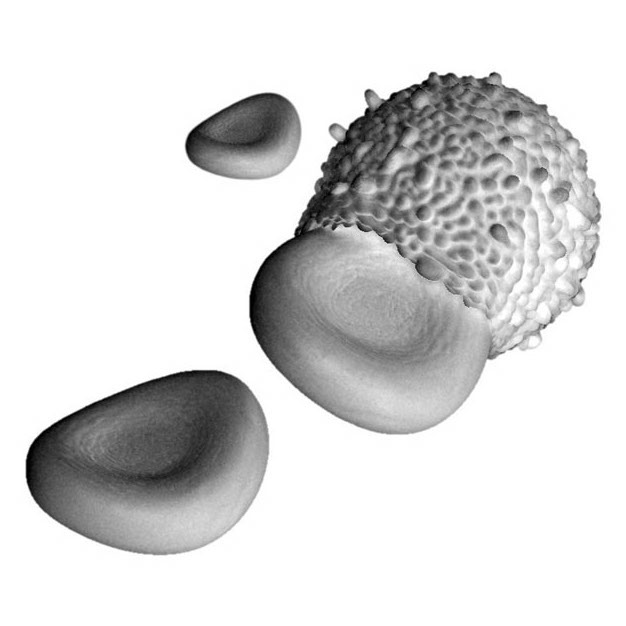What is phagocytosis?
Our immune systems try to keep us healthy in a whole host of ways.
We explain some of these ways here, focussing in particular on phagocytosis.
The immune system
Our immune systems protect against disease. To do this they must distinguish foreign bodies (such as bacteria and viruses) from the body itself (i.e. normal healthy cells). Once this is done the immune system can attack and try to destroy the foreign bodies.
There are two components to the immune system:
- The innate immune system: a non-specific immune response that deals with pathogens in a general way
- The adaptive immune system: an extra system that adapts to particular pathogens and remembers how to identify them
In order to deal with the huge range of pathogens that exist, our immune systems are very complicated and consist of many different components and types of cell, that all work together to try to keep us healthy.

Specialised cells

There are many cells in the immune system, some with general jobs and some with very specialised jobs. We are still learning about how all these cells work and interact with each other.
Some important immune cells include:
- Neutrophils: one of the most abundant types of white blood cell and one of the first to arrive at sites of inflammation
- Macrophages: specialists in 'eating' foreign bodies, they can even eat dead neutrophil cells
- B cells: part of the adaptive immune system, these cells can make antibodies and remember past infections
- T cells: another part of the adaptive immune system that have a range of jobs including destroying virus-infected cells and helping other immune cells
Other immune cells include natural killer cells, dendritic cells and granulocytes.
'Eating' things
Cells often need to bring chemicals or particles inside themselves. For example, this can be used as a way of acquiring nutrients or as way of removing pathogens. There are a whole host of ways that this can be done, including:
- Clathrin-mediated endocytosis: a way of ingesting small particles, which often seem to 'sink' into the cell
- Pinocytosis: how liquids and dissolved molecules are brought into the cell
- Phagocytosis: a way that large particles are ingested and the focus of our research (see below)

Phagocytosis

Phagocytosis is the way that particles bigger than about one-thousandth of a millimetre are 'eaten' by cells. Using this method, large particles such as bacteria, dead cells and dust can be taken inside cells. Once this is done, these particles can be destroyed. This is a very active process, with the edge of the cell moving outwards and wrapping around the particle.
Only some cells, called professional phagocytes, are experts at phagocytosis. These include neutrophils and macrophages. Many single-celled organisms, such as bacteria and amoeba, can also do phagocytosis, which is then normally used as a way of acquiring food.
Click the button below for a movie of a neutrophil phagocytosing a polystyrene bead:
Phagocytosis movie...